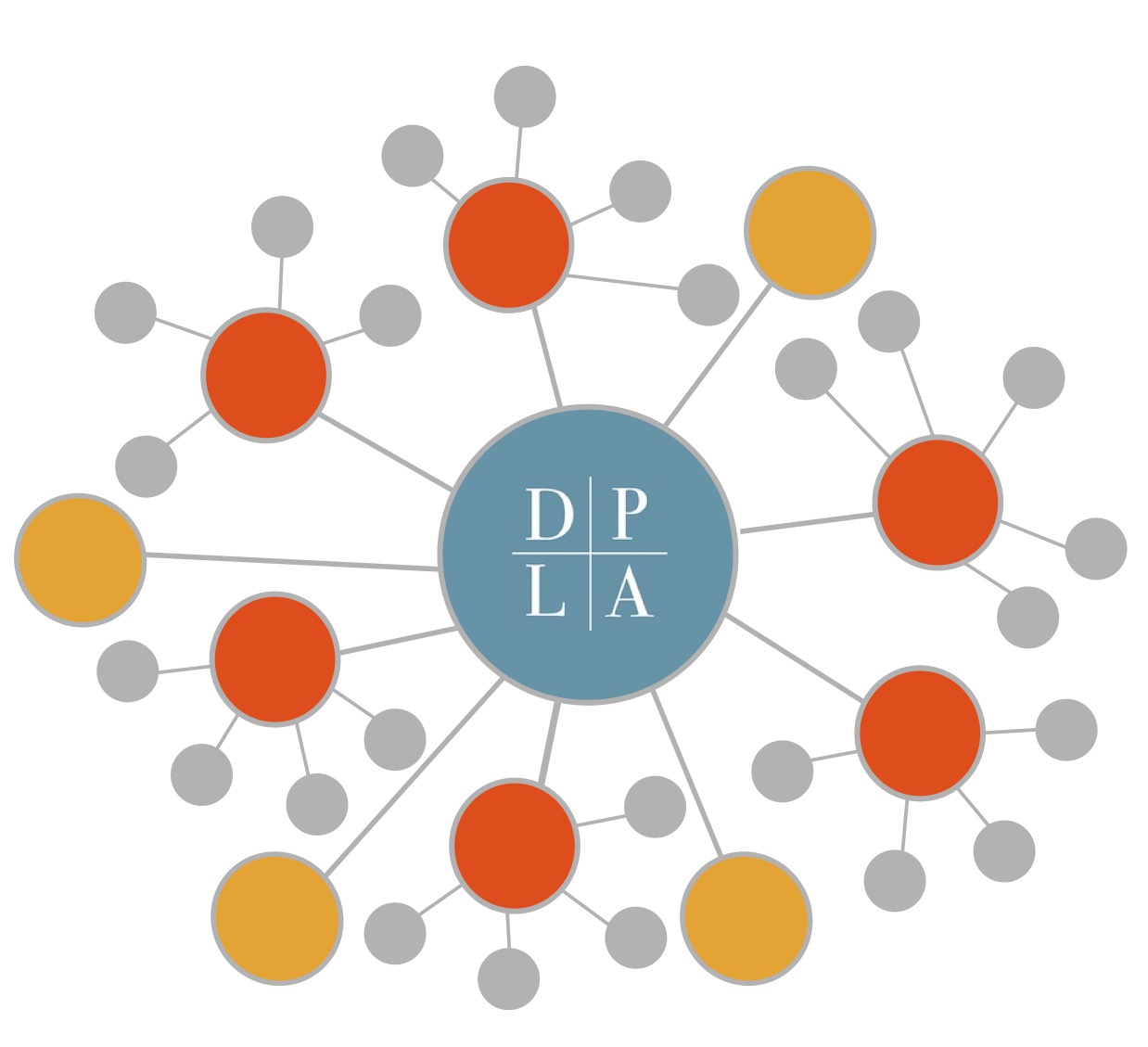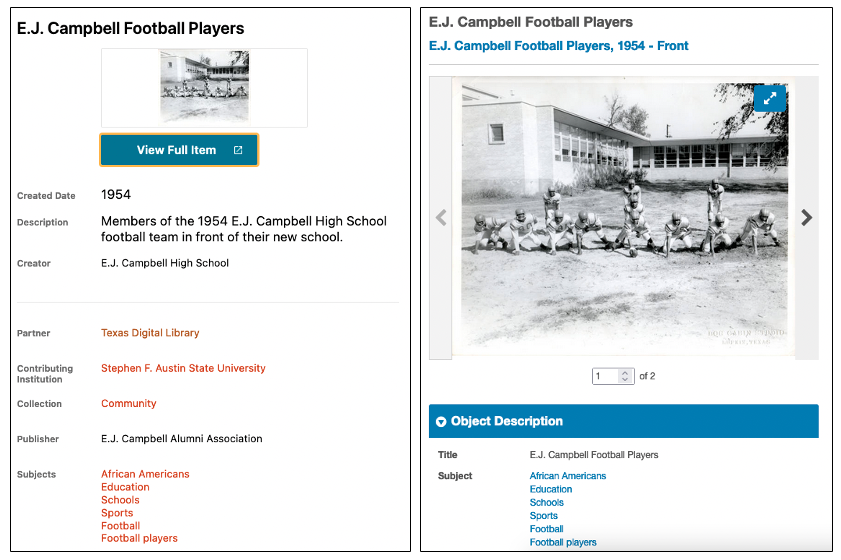The Digital Public Library of America (DPLA) is a portal to millions of digital items from libraries, archives, museums, and other cultural heritage organizations across the United States. The collections in DPLA include photographs, manuscripts, oral histories, maps, video recordings, and more.
DPLA works on a “hub and spoke” model. TxHub is a service hub of DPLA, with TDL and the Portal to Texas History working with institutions in our state to share their metadata with DPLA. TDL harvests metadata from our members, transforms it to meet DPLA standards, and sends it to DPLA.
DPLA aggregates metadata about digital resources from its partner organizations, and makes that metadata searchable in a centralized portal. Because DPLA only stores metadata and thumbnail images, not original digital objects, users are always directed back to the partner’s repository to view the full item and its complete metadata.
Every item in the DPLA portal contains the metadata provided by the item’s home institution. In the example below, the item comes from Stephen F. Austin State University, as indicated in the DPLA metadata. The record in DPLA also includes a thumbnail image of the item. If a user wants to see the item in more detail, they can click “View Full Item” to be taken to the item in the Stephen F. Austin State University library’s digital repository.
To find out more about using the DPLA portal, see the DPLA user guides and search tips.


